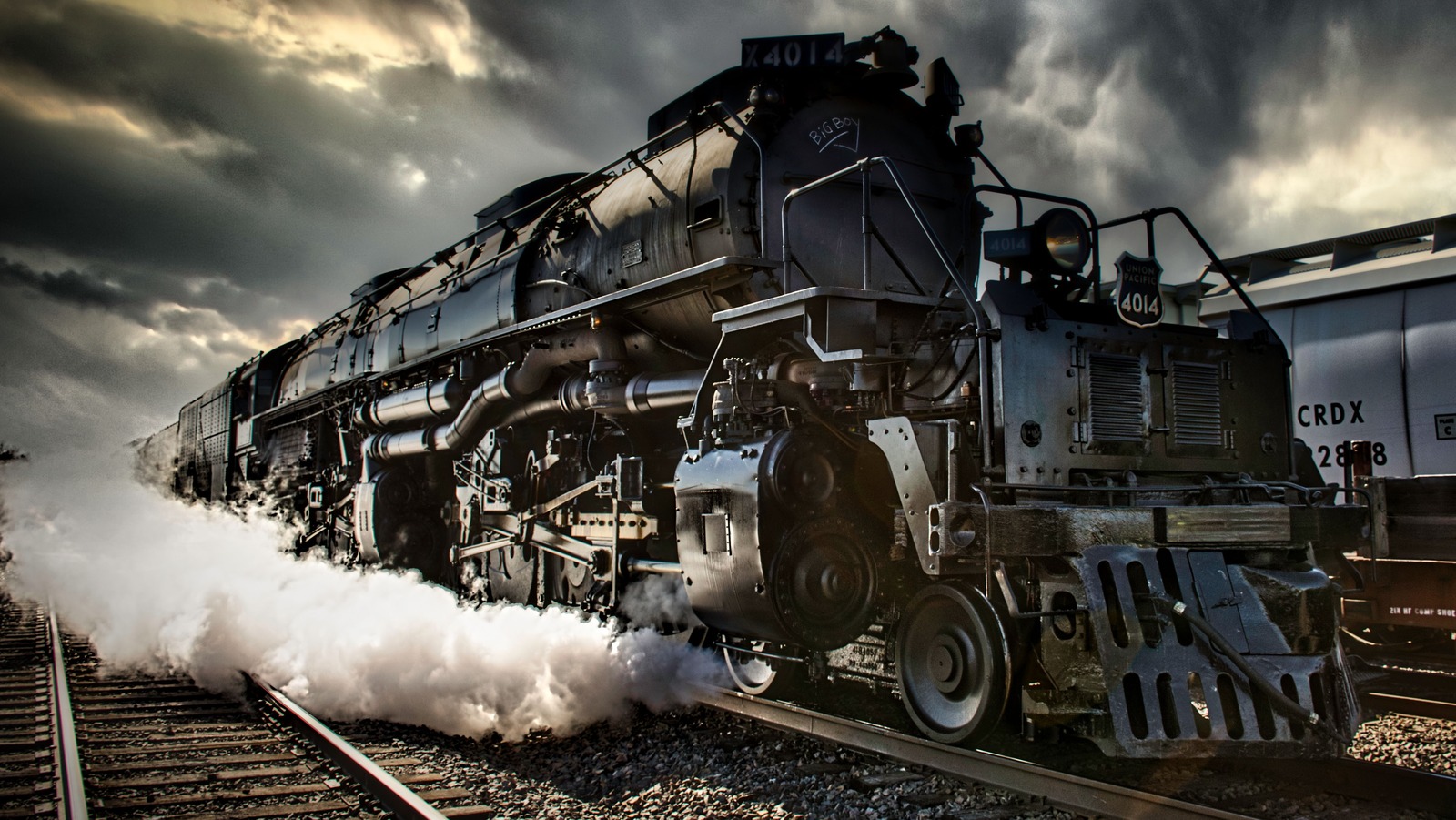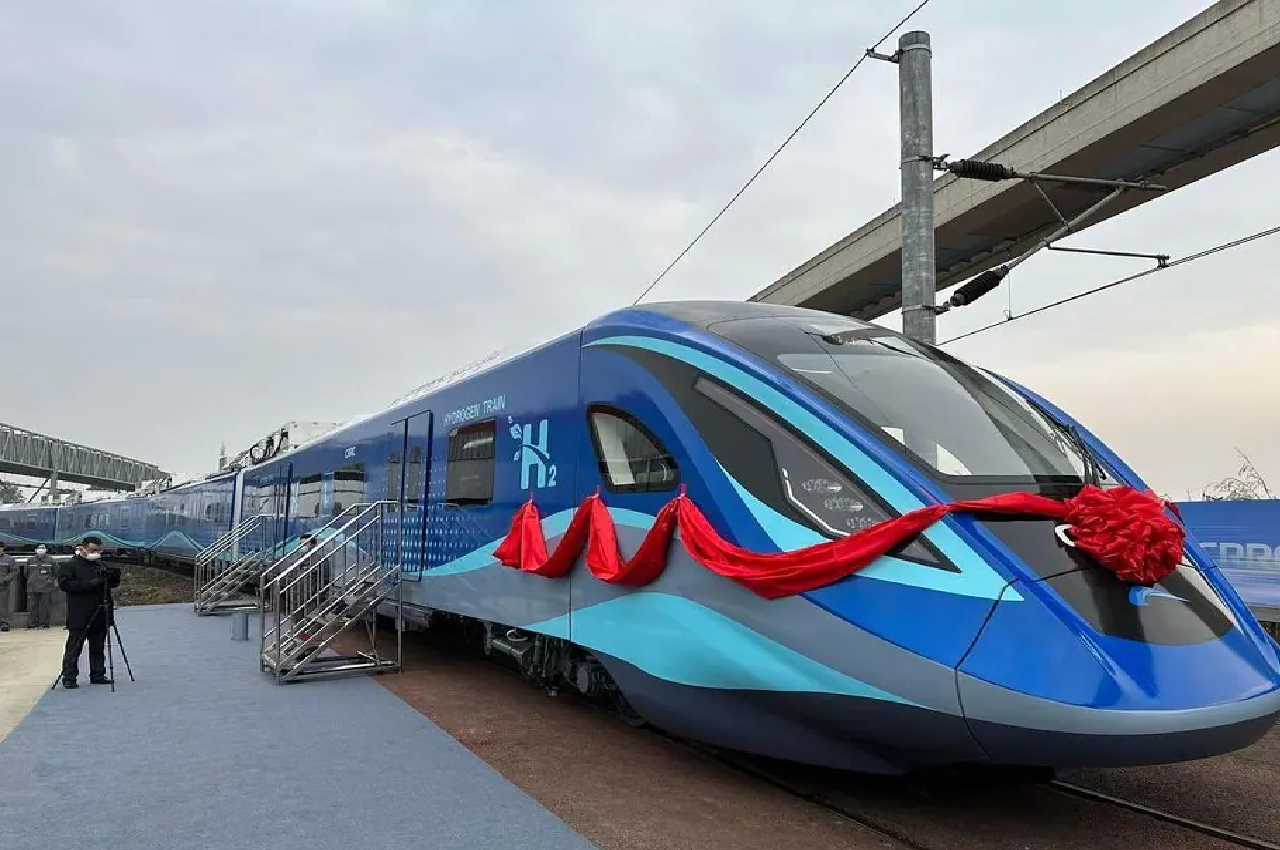Out Of This World Tips About Why Are Trains So Powerful

Why Mumbai's Local Trains Are Still So Crowded
Ever Wondered Why Trains are Such Powerhouses?
1. The Sheer Brawn of Steel
Okay, lets be honest, trains are seriously impressive. They rumble along, pulling incredible loads, and you might find yourself wondering, "Why are trains so powerful?" Well, it's not magic, though it sometimes feels like it! It's a combination of clever physics, engineering marvels, and good old-fashioned brute force. Think of it like this: you can probably push a shopping cart pretty easily, but try pushing a car up a hill. Trains are basically super-sized shopping carts designed to move mountains of stuff. Metaphorically speaking, of course. Though I wouldn't put it past a train to actually move a small hill if it really wanted to.
One key thing to remember is the incredibly low rolling resistance between steel wheels and steel rails. This means there's very little friction to overcome once the train is moving. It's like an ice skater gliding across the rink—it takes energy to get going, but once they're in motion, they can cover a lot of ground with minimal effort. Compare that to a car with rubber tires on asphalt, where friction is much higher. This low resistance is a HUGE factor in the immense hauling capability of these metal behemoths.
And then theres the power source. Modern trains often use diesel-electric engines, which are basically diesel engines that generate electricity to power electric motors connected to the wheels. These electric motors provide immense torque (rotational force), allowing the train to accelerate and pull heavy loads even uphill. Imagine tiny, super-strong robots inside the train, each giving the wheels a powerful shove. Except instead of robots, it's electricity and finely-tuned engineering. Much more efficient (and less likely to stage a robot rebellion).
Finally, think about the momentum. A fully loaded train has an absolutely enormous amount of momentum. It takes a lot of energy to get it moving, but once it is moving, it's incredibly difficult to stop. Thats why train accidents can be so catastrophic; all that mass and speed is a force to be reckoned with. Its like trying to stop a runaway freight train ofwell, freight! Not something you want to try at home, thats for sure.

The Physics Behind the Power
2. Leveraging Physics for Epic Hauling
While the size and strength of a train are obvious contributors to its power, the underlying physics play a crucial role. It's not just about being big; it's about being smartly big. Remember that low rolling resistance we talked about? It's so important, it bears repeating! It allows trains to move incredibly efficiently, reducing the amount of energy needed to overcome friction.
Another key concept is adhesion, the friction between the wheels and the rails that allows the train to grip the track and propel itself forward. Without sufficient adhesion, the wheels would just spin uselessly. Engineers carefully manage adhesion through various techniques, such as applying sand to the rails to increase friction when needed. Think of it like putting on snow tires in the winter; you need that extra grip to maintain control. Trains are just a little bit bigger, and a little bit more powerful.
The way trains distribute their weight also contributes to their power. By distributing the weight evenly across multiple axles, the pressure on each individual point of contact with the rail is reduced. This prevents the wheels from sinking into the track and further reduces rolling resistance. It's like walking on snowshoes instead of boots; you spread your weight out to avoid sinking. Except the train is doing it with tons (literally!) of cargo.
And let's not forget about the use of multiple locomotives. In many cases, especially when hauling very heavy loads or traversing steep grades, trains use multiple locomotives coupled together. This effectively multiplies the pulling power of the train, allowing it to overcome even the most challenging obstacles. It's like having a team of horses pulling a wagon instead of just one; more horses equal more pulling power. Only in this case, the horses are giant, metal, and powered by electricity (or diesel-electric hybrids). A definite upgrade.

Why Railroads Don't Need Expansion Joints Gunboards Forums
The Engineering Marvels
3. From Blueprint to Behemoth
The power of trains isn't just about physics and brute force; it's also a testament to human ingenuity and engineering prowess. From the design of the locomotives to the construction of the tracks, every aspect of the train system is carefully engineered to maximize efficiency and power. Think about the complexity involved in coordinating the movements of a long train, ensuring that each car follows the track smoothly and safely. It's a remarkable feat of engineering.
The materials used in train construction are also critical. Steel, for example, is chosen for its strength, durability, and ability to withstand the immense stresses and strains of heavy hauling. The wheels are designed to be incredibly strong and resistant to wear, and the rails are precisely aligned to ensure a smooth and stable ride. Every component is carefully selected and tested to ensure it can withstand the rigors of the railway environment.
Modern train technology is constantly evolving, with new innovations aimed at improving efficiency, safety, and power. For example, regenerative braking systems can capture energy during braking and use it to recharge the train's batteries, reducing energy consumption. Advanced signaling systems help to prevent collisions and optimize train movements. And new locomotive designs are constantly being developed to increase power and reduce emissions. It's a never-ending quest for the perfect balance of power and efficiency.
Even the shape of the locomotive plays a role in its power. Aerodynamic designs reduce air resistance, allowing the train to move more easily at high speeds. This is particularly important for passenger trains, where speed and efficiency are paramount. Think of it like the difference between pushing a brick through the air and pushing a streamlined rocket; the shape makes a huge difference.

Highspeed Rail Definition, History, Technology, Development, & Facts
Economic Impact
4. The Engine of Commerce
The immense power of trains translates directly into economic benefits. Trains are an incredibly efficient way to transport large quantities of goods over long distances, making them essential for supporting industries and facilitating trade. From raw materials to finished products, trains play a vital role in the supply chain, connecting producers with consumers and keeping the economy moving. Consider the sheer volume of goods that are transported by rail every day; it's a staggering amount. Without trains, our economy would look very different indeed.
Trains are also a relatively environmentally friendly mode of transportation compared to trucks. While trains do emit greenhouse gases, they are generally more fuel-efficient per ton-mile than trucks. This means that trains can move more goods with less environmental impact. As concerns about climate change continue to grow, the importance of rail transport is likely to increase even further.
Furthermore, trains can help to reduce congestion on highways. By moving freight by rail instead of by truck, we can reduce the number of vehicles on the road, easing traffic and improving air quality. This is particularly important in urban areas, where traffic congestion is a major problem. So, next time you're stuck in traffic, remember that there's probably a train somewhere nearby, quietly and efficiently moving goods and helping to alleviate the gridlock.
The rail industry also provides a significant number of jobs, from engineers and conductors to mechanics and track maintenance workers. These jobs contribute to the overall economy and help to support communities across the country. So, the next time you see a train, remember that it's not just a powerful machine; it's also a vital part of our economy and a source of employment for many people.

India's First Hydrogenpowered Train Expected To Run From...
The Future of Rail
5. Innovation on the Rails
The story of train power isn't over yet. As technology continues to advance, we can expect to see even more powerful and efficient trains in the future. Innovations such as high-speed rail, electric locomotives, and advanced signaling systems are poised to revolutionize the rail industry. Imagine a future where trains can travel at speeds of 300 miles per hour or more, carrying passengers and freight across the country in a matter of hours. It's not just a dream; it's a very real possibility.
Electric locomotives, powered by renewable energy sources, have the potential to significantly reduce the environmental impact of rail transport. By eliminating the need for diesel fuel, these locomotives can help to reduce greenhouse gas emissions and improve air quality. This is a crucial step towards creating a more sustainable transportation system. Think of trains gliding silently through the countryside, powered by the sun and wind. It's a vision worth striving for.
Advanced signaling systems, such as Positive Train Control (PTC), are designed to prevent accidents and improve safety. These systems use GPS technology and other sensors to monitor train movements and automatically apply the brakes if a collision is imminent. This technology can help to prevent human error and make rail travel even safer than it already is. Safety is always paramount, and these advancements are a welcome addition to the rail industry.
So, the next time you see a train rumbling down the tracks, take a moment to appreciate the incredible power and engineering that goes into making it move. It's a testament to human ingenuity and a vital part of our economy and transportation system. And who knows, maybe one day you'll be riding on a high-speed electric train, powered by renewable energy, and marveling at the future of rail transport. The possibilities are endless!

FAQ
6. Q
A: It's all about that steel-on-steel action! The low rolling resistance between steel wheels and steel rails means trains need significantly less energy to move the same amount of cargo compared to trucks with their rubber tires on asphalt. Plus, one locomotive can pull dozens (or even hundreds!) of cars, distributing the weight and allowing for massive payloads. Think of it as the difference between trying to drag a heavy box across a carpet versus sliding it across an ice rink.
7. Q
A: A combination of factors! Powerful locomotives, often multiple ones coupled together, provide the necessary torque (rotational force) to overcome gravity. Adhesion, the grip between the wheels and the rails, is crucial. And engineers carefully manage train speed and momentum to maintain traction and avoid wheel slippage. It's like a skilled climber using ropes and technique to scale a challenging cliff face, only on a much larger scale.
8. Q
A: Not necessarily! The power of a train depends on the specific locomotive design and its intended use, not just the power source. However, electric trains can be more efficient and environmentally friendly, especially when powered by renewable energy sources. They also often offer smoother acceleration and quieter operation. Think of it like comparing a gas-powered sports car to an electric one; both can be powerful, but they achieve that power in different ways.